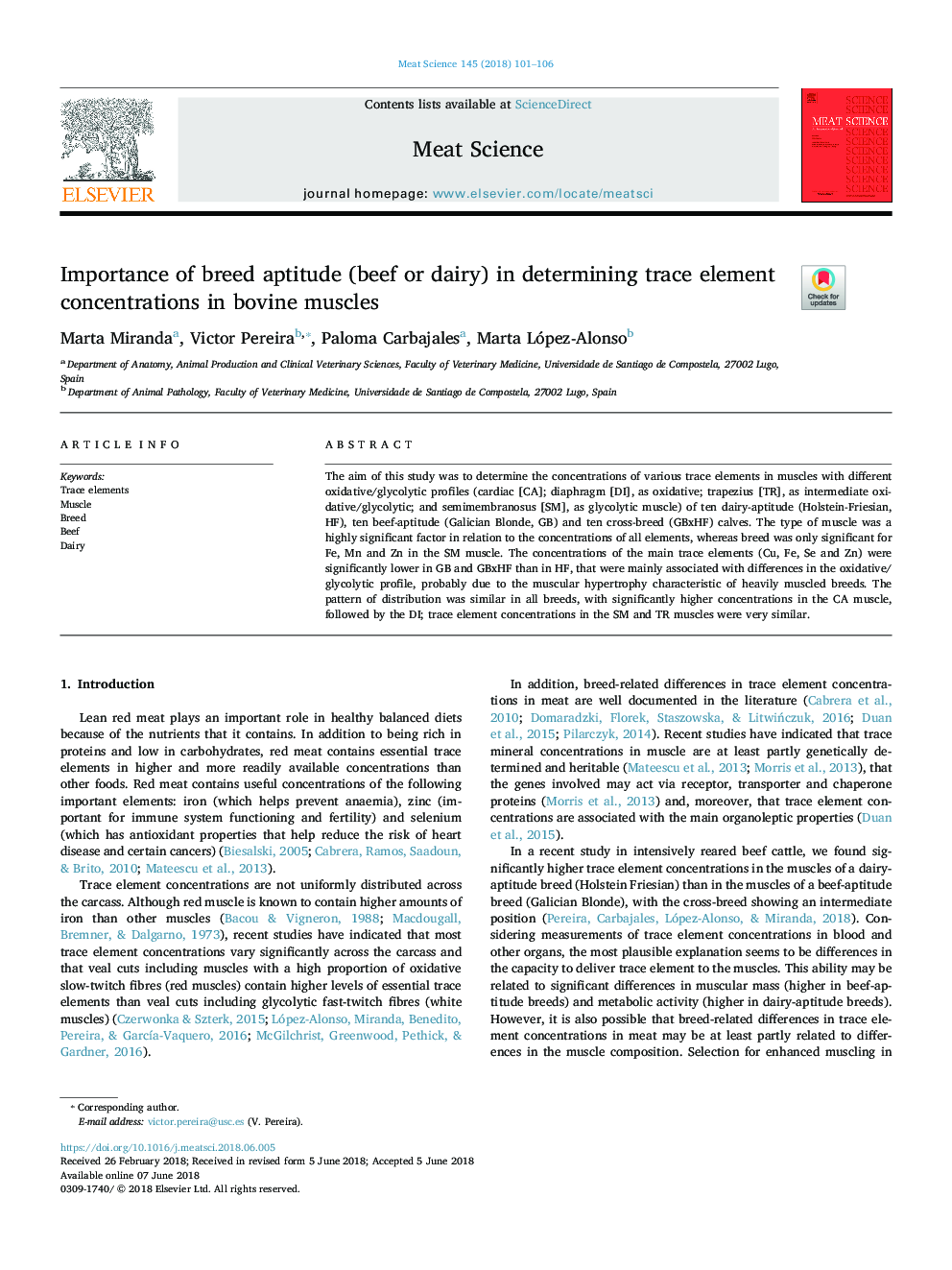| Article ID | Journal | Published Year | Pages | File Type |
|---|---|---|---|---|
| 8502366 | Meat Science | 2018 | 6 Pages |
Abstract
The aim of this study was to determine the concentrations of various trace elements in muscles with different oxidative/glycolytic profiles (cardiac [CA]; diaphragm [DI], as oxidative; trapezius [TR], as intermediate oxidative/glycolytic; and semimembranosus [SM], as glycolytic muscle) of ten dairy-aptitude (Holstein-Friesian, HF), ten beef-aptitude (Galician Blonde, GB) and ten cross-breed (GBxHF) calves. The type of muscle was a highly significant factor in relation to the concentrations of all elements, whereas breed was only significant for Fe, Mn and Zn in the SM muscle. The concentrations of the main trace elements (Cu, Fe, Se and Zn) were significantly lower in GB and GBxHF than in HF, that were mainly associated with differences in the oxidative/glycolytic profile, probably due to the muscular hypertrophy characteristic of heavily muscled breeds. The pattern of distribution was similar in all breeds, with significantly higher concentrations in the CA muscle, followed by the DI; trace element concentrations in the SM and TR muscles were very similar.
Keywords
Related Topics
Life Sciences
Agricultural and Biological Sciences
Food Science
Authors
Marta Miranda, Victor Pereira, Paloma Carbajales, Marta López-Alonso,
